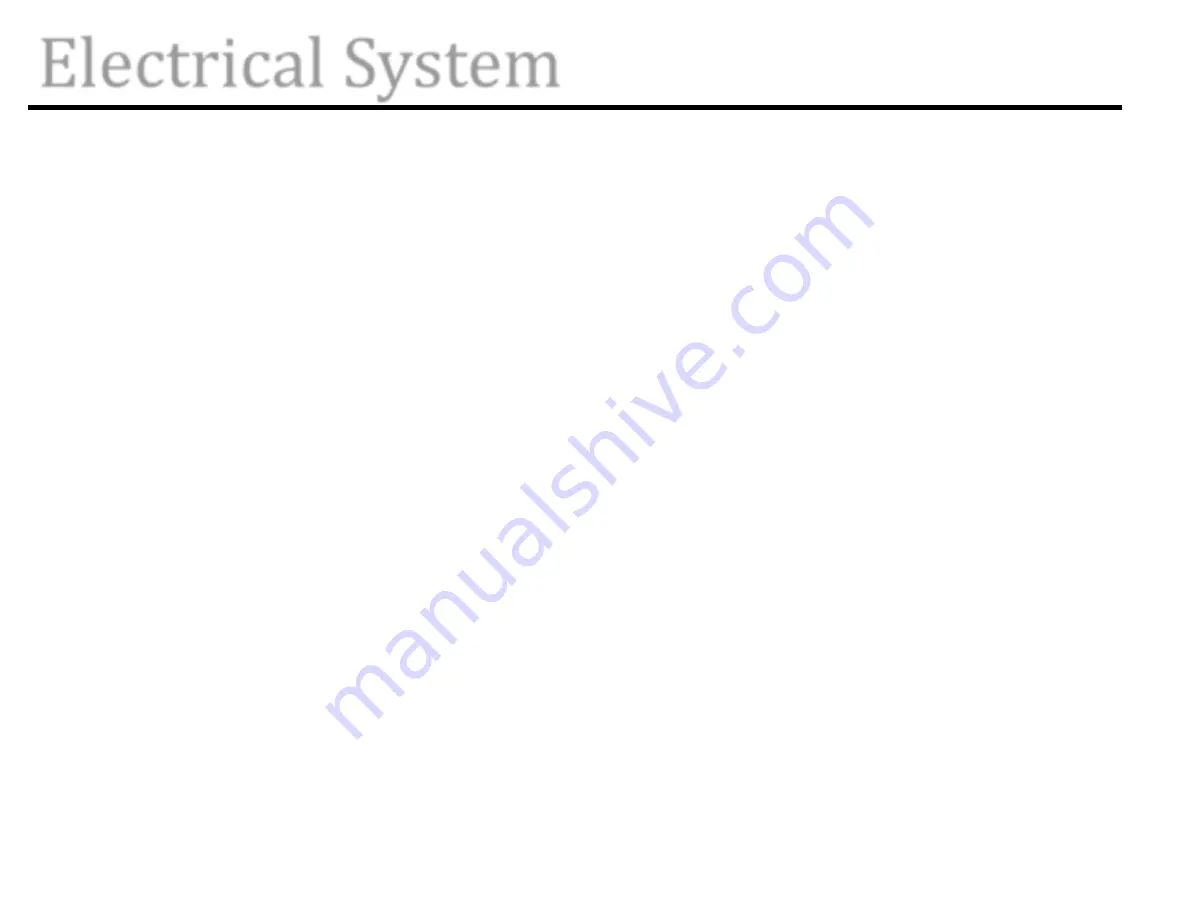
Electrical System
General Overview
The 211DC is equipped with a 12V DC Electrical system that can be equipped with an optional AC battery charger. The 211DC can only be
rigged for a single motor. If the boat is rigged without an optional battery selector switch, the boat will be rigged for x1 Group 27 battery. If
the battery selector switch is installed, the boat will be rigged for x2 Group 27 batteries. Key West recommends this option for those who
wish to install an optional windlass to their boat due to the high power demand. The battery(s) will provide power to the engine, house and
optional windlass system.
12V power is distributed to the 12V factory installed systems through individual circuit breakers located beneath their respective switches
on the main switch panel. All 12V systems are grounded individually to a grounding block located inside the console. The grounding block
is than grounded directly to a battery. A 50amp main circuit breaker is installed in the console to protect the house systems from overload
and is connected either directly to the batteries or the optional battery selector switch. Additional circuit breakers for the auto bilge pumps
and stereo memory are wired directly to either the battery or battery selector switch. If a windlass is installed, a 50amp circuit breaker will
be installed.
The system is designed so that turning the battery switch off will still allow the bilge pump to function in an automatic mode. Key West
recommends that boats that are going to be left in the water or in a boat lift, where access to the drain plug is not feasible, be installed with a
battery charger to prevent discharge by the bilge pump. Trim Tabs and optional power steering are connected directly to the battery and
feature overcurrent protection. They do not energize until the engine ignition switch is turned to the “On” position.
Battery Selector Switch (Optional)
As an option, a battery selector switch can be installed. The battery selector switch is installed on the starboard side of the console. The
battery switch provides power to the engine and 12V accessories. The switch is a dual circuit switch and has 4 positions (OFF, 1, 2, Both).
This allows power to be supplied by either battery 1, battery 2, or both simultaneously. The switch also directs the charging current from
the engines alternator.
If position “1”, is selected on the switch, the engine and 12V accessories will receive power from Battery 1 and the engine’s alternator will
charge Battery 1. Battery 2 will be isolated and in reserve. If position “2”, is selected on the switch, the engine and 12V accessories will
receive power from Battery 2 and the engine’s alternator will charge Battery 2. Battery 1 will be isolated and in reserve. If position “Both”
is selected, the switch connects the batteries in parallel and the engine and 12V accessories will receive power from both batteries. The
engine’s alternator will charge both batteries simultaneously as well. When the boat is underway, placing the switch in the “Both” position
is recommended so that both batteries charge. When the boat is moored (Engine Off) and 12V accessories are being used, it is
recommended to select position “1” or “2” so that one battery is isolated and can be used to crank the engine. When using the windlass, it is
recommended to place the battery switch in the “Both” position due to the high power demand.
Summary of Contents for 2014 KW 211 DC
Page 1: ...211 Dual Console Quick Guide and Schematics For 2014 and 2015 Models...
Page 4: ......
Page 9: ......
Page 11: ......
Page 16: ......
Page 17: ...Grey...
Page 18: ......
Page 19: ......
Page 20: ......






































